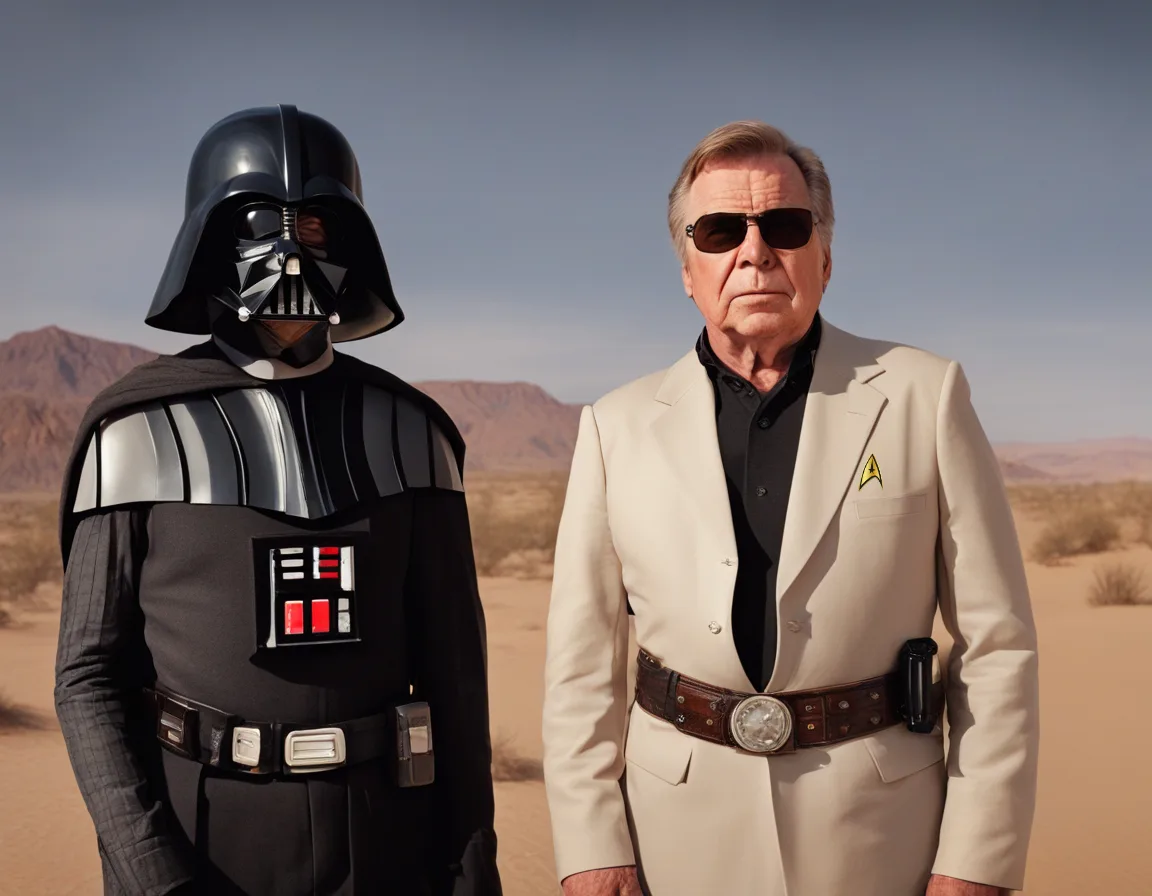Ah, the age-old debates that have fueled countless fan theories and Reddit threads: Why doesn’t the USS Enterprise just “beam” bombs onto enemy starships in Star Trek? And why don’t the rebels in Star Wars use unmanned spaceships at light speed to destroy Star Destroyers or the Death Star? These questions have puzzled fans for years, leading to a plethora of explanations, some more plausible than others. Let’s take a quick look into these galactic dilemmas to find out why our beloved characters don’t always use the “obvious” tactics.
The Star Trek Conundrum: To Beam or Not to Beam
The Rules of Engagement
Firstly, it’s essential to understand the Starfleet’s rules of engagement. According to the official Star Trek website, Starfleet operates under a strict code of conduct, emphasizing diplomacy over aggression. Beaming a bomb onto an enemy ship would be a blatant violation of these principles.
Technological Limitations
Secondly, the transporter technology isn’t foolproof. It requires precise calculations and conditions to function correctly. The risk of beaming a bomb that could detonate prematurely or not at all is too high.
Shields Up!
Lastly, let’s not forget that most enemy ships have shields that prevent anything, including transporters, from penetrating their defenses. So, even if Captain Kirk wanted to beam a bomb, the shields would have to be down, which is rarely the case in a battle scenario.
The Star Wars Quandary: Light Speed Kamikaze
The Cost Factor
One of the most straightforward explanations is the cost. Building a spaceship isn’t cheap, even in a galaxy far, far away. According to the official Star Wars website, the resources required to construct a single X-wing could support a small community for a year.
The Force
Another reason could be the Force itself. The Force has a will, and it’s not always as straightforward as sending a ship at light speed into a Star Destroyer. The Force works in mysterious ways, and perhaps it has other plans for the rebels and their ships.
The Raddus Incident
The tactic was used once, in “The Last Jedi,” when Vice Admiral Holdo piloted the Raddus at light speed into the First Order’s fleet. However, this was a desperate move, and the consequences were not entirely positive. It led to a debate within the Star Wars community about the “Holdo Maneuver” and whether it should be a standard tactic.
The Common Thread: Storytelling
One of the most crucial aspects that bind both Star Trek and Star Wars is the art of storytelling. These aren’t just science fiction tales filled with flashy special effects and futuristic technology; they are intricate narratives that delve into the human (or alien) condition, ethical dilemmas, and the complexities of good versus evil.
Emotional Investment
The storytelling in both franchises is designed to make us emotionally invested in the characters and their journeys. Whether it’s Captain Kirk’s moral quandaries or Luke Skywalker’s path to becoming a Jedi, these stories are crafted to engage us on an emotional level. Using “easy” tactics like beaming bombs or light speed kamikazes would rob these narratives of their emotional depth. The struggles, the failures, and the hard-fought victories are what make these stories resonate with audiences.
Ethical and Moral Lessons
Both series serve as platforms for exploring ethical and moral questions. Star Trek often delves into issues of diplomacy, the ethics of advanced technology, and the responsibilities that come with power. Star Wars, on the other hand, is a tale of redemption, the balance between good and evil, and the importance of hope and resilience. Resorting to “obvious” but morally questionable tactics would undermine these themes, making the stories less rich and thought-provoking.
The Element of Surprise
Another storytelling advantage is the element of surprise. If characters always resorted to the most straightforward solutions, the stories would become predictable. The unexpected twists and turns, the innovative solutions to seemingly insurmountable problems, are what keep audiences on the edge of their seats.
World-Building
Both franchises have spent decades building intricate worlds filled with lore, history, and rules. These rules aren’t just arbitrary limitations; they serve to make the universe more believable and engaging. Breaking these rules with “obvious” tactics would not only create inconsistencies but also risk alienating the fan base that has invested in the richness of these worlds.
The Legacy
Lastly, the storytelling legacy of Star Trek and Star Wars is built on the foundation of character development, ethical dilemmas, and intricate plotlines. These elements have made both franchises cultural phenomena that have stood the test of time. Simplifying the challenges faced by our heroes with “easy” solutions would dilute this legacy, making the stories less impactful and memorable.
Conclusion
In essence, the storytelling in Star Trek and Star Wars is a delicate balance of character development, ethical considerations, and narrative complexity. While it may seem like there are “obvious” solutions to the problems faced by characters in Star Trek and Star Wars, the reality is far more complex. Whether it’s the ethical guidelines of Starfleet or the mysterious will of the Force, these factors contribute to the depth and complexity of these beloved franchises. So the next time you find yourself questioning the tactics of Captain Kirk or Luke Skywalker, remember that the galaxy is a complicated place, and the “obvious” solution isn’t always the right one.
And there you have it! The next time someone brings up these questions in a heated fan debate, you’ll have more than enough ammunition to defend the honour of these iconic series. May the Force be with you, and live long and prosper!

